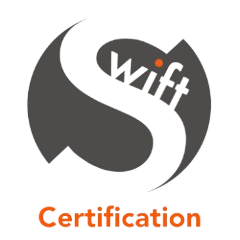If you’ve ever dipped your toe into the world of ISO 9001, you’ll know it can feel like wading through alphanumerical soup. Clauses, sub-clauses, “contexts of the organisation”, “nonconformities”… it’s enough to make even the most determined business owner sigh. On the internet, you’ll find countless posts from people asking: “What does it actually take to get ISO 9001 certification?” The truth is, the standard is powerful, but the language can be off-putting.
At Swift Certification, we believe ISO 9001 should be accessible to everyone – not just quality managers fluent in jargon. So, let’s strip it back and explain what it really means, in plain English, with examples you’ll recognise from everyday business life.
Why ISO 9001 Matters
ISO 9001 is the world’s most widely used quality management standard. But don’t let the title scare you. At its heart, it’s about making sure your business consistently delivers what your customers expect. It’s not about creating mountains of paperwork or chains of digital files. It’s about building confidence, reducing mistakes, and improving how you work.
Translating Key Clauses into Everyday Business
Here are some of the clauses that often trip people up, and what they really mean:
- “Context of the organisation” Translation: Know your business environment. Who are your customers? Who are your suppliers? What regulations affect you? It’s about understanding the playing field before you start the game.
- “Leadership” Translation: Management must lead by example. If the directors don’t care about quality, neither will the staff. Leadership sets the tone.
- “Planning” Translation: Think ahead. Spot risks before they become problems. For example, if a supplier is unreliable, plan a backup.
- “Support” Translation: Give your team the tools and training they need. Don’t expect staff to follow processes if they’ve never been shown how.
- “Operation” Translation: Do the work the way you said you would. If you promise customers a two-day delivery, make sure your processes can achieve it.
- “Performance evaluation” Translation: Check how you’re doing. Gather feedback, measure results, and review complaints.
- “Improvement” Translation: Fix what’s broken and keep getting better. Don’t just patch over problems – find the root cause and stop them happening again.
Everyday Examples
Let’s make this real.
- Customer complaints: ISO 9001 doesn’t expect you to never get complaints. It expects you to handle them properly. That means logging them, investigating why they happened, and making changes so they don’t repeat. For instance, a client rings up furious about a late delivery. With ISO 9001, you already have a procedure: record the problem, figure out what went wrong, and change things so it won’t repeat.
- Supplier issues: If your supplier delivers late or with poor quality, ISO 9001 wants you to record it, evaluate the impact, and decide whether to keep them or find alternatives. If your supplier sends the wrong parts again, instead of losing your rag, you review your process, maybe add an extra check, and update staff training.
- Delivery delays: Traffic, breakdowns, or missed shipments – life happens. If you promise next-day delivery but regularly miss it, the standard pushes you to ask: Why? Is it staffing? Stock control? Courier reliability? Then you fix the cause, not just the symptom. ISO 9001 requires you to spot recurring issues and tweak routes or backup plans.
Glossary: ISO 9001 in Plain English
- QMS (Quality Management System): A way of working that means everyone is on the same page and doing things the best way, every time.
- Internal Audit: Checking your own work before someone else does. Like a “mock inspection” of your own processes.
- Nonconformity: Something went wrong. A product, service, or process didn’t meet requirements.
- Corrective action: How you fix the problem and stop it happening again.
- Audit: A health check of your system. Again, internal audits are done by your team; external audits by a certification body.
- Documented information: Evidence. This could be a policy, a record, or even an email – anything that proves you did what you said.
- Process approach: Looking at your business as a set of linked processes (sales, purchasing, production, delivery) rather than isolated tasks.
- Continual improvement: The idea that you don’t stop once you’re certified. You keep refining and improving.
- Management Review: Periodic team meeting to see what’s working, what’s not, and what to change.
Why Jargon-Free Matters
We often hear many business owners say the same thing: “We just want to know what to do, without the jargon.” That’s where Swift Certification comes in. As a certification body, we focus on making ISO 9001 practical and understandable for SMEs. We don’t drown you in clauses – we guide you step by step, speaking plainly, helping your team ‘own’ the quality management journey. We skip the acronyms and cut through the confusion, so you know exactly what you’re signing up for and how to make it work for you.
How Swift Certification Helps
- Plain-English guidance: We translate the standard into steps you can follow.
- Supportive audits: Our audits are collaborative, designed to help you improve rather than catch you out.
- SME focus: We understand the pressures of small and medium-sized businesses. We keep it lean, practical, and cost-effective.
Final Thoughts
ISO 9001, done well, isn’t about bureaucracy or endless files. It’s about building a system that works for you, your staff, and your customers.
So the next time you see a clause that makes your eyes glaze over, remember: behind the jargon is a simple idea: do what you say, check it works, and keep improving. That’s quality management in a nutshell.
At Swift Certification, we’re here to help you cut through the noise. With the right partner, ISO 9001 is about real value, not red tape. Quality shouldn’t need a translator!
If you’re ready to ditch the jargon and get started, let’s have a proper conversation:



